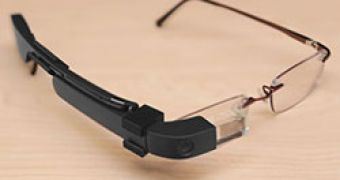The Google Glass augmented reality headset has been putting the world in a tizzy ever since before the first beta product release happened, and now even 3D printing experts are joining in on the fun.
Google isn't using any 3D printing technology in its design of the Google Glass or for the actual manufacturing process.
That doesn't mean that others can't contribute to the success of the thing by means of it, though. Not that it's the actual device that project creators Noé and Pedro Ruiz at Pixil 3D seem concerned with.
Instead, they appear to be thinking more of those people who wear glasses but would still wish to use the Google Glass as well.
And since the prescription lenses/frames that Google Glass will receive aren't exactly the best-ever looking, they chose to go to the source.
Which is to say, they came up with a 3D printed adapter than can enable you to attach the Google Glass to your existing pair of glasses.
The project shows that a 3D printed clip-on modification for your prescription glasses is simple, made of plastic, and needs a single screw to fasten the Glass to it. And the best part is that the material cost of the adapter is only $1 / €0.73.
That's a very, very low price to pay for the chance to freely use the standard Google Glass product, whenever it comes out.
After all, it costs, or will cost, $1,500 / €1,500 when it is launched, so we would understand why someone would not also want to pay a dozen or hundred bucks more for special frames and/or prescriptive lenses on top of the normal kit.
With the Pixil 3D adapter, you just need one dollar and you're all set for life. Well, maybe not, since the Glass probably won't last that long, especially if you're accident-prone, but that's beside the point.
Google Glass is a wearable computer with an optical head-mounted display (OHMD) and a lot of hype surrounding it, even though it has a very small user base at the moment (Google is using them for feedback, as it refines the thing).
In a nutshell, it's a sort of monocle (although it has a full frame) that displays pop-up information and notifications at the edge of your vision. It should also allow you to hold video calls or phone calls, tweet and share photos online, send texts, etc. The integrated camera can take 2582 x 1856-pixel photos and 720p video.
A dual-core OMAP4430 processor runs everything, using the energy from a 2.1 Wh Lithium Polymer battery.

 14 DAY TRIAL //
14 DAY TRIAL //